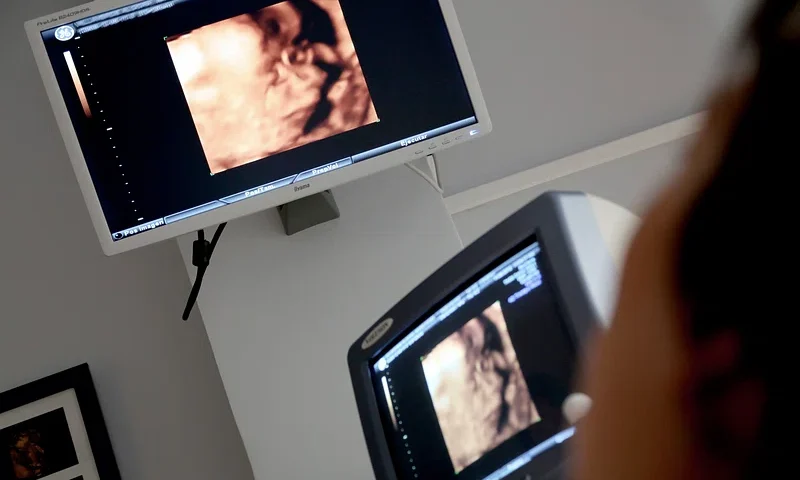
Addressing Anxiety in Children and Adolescents
October 1, 2025
Understanding the Physical and Emotional Aspects of a Well-Woman Exam
October 1, 2025Ultrasound technology is a standard part of modern prenatal care. This imaging technique uses sound waves to create pictures of the fetus, placenta, and uterus. For many expectant parents, it offers a first glimpse of their developing baby. In the field of obstetrics, these scans provide specific details about the progress of a pregnancy. They serve as a tool for providers to monitor growth and development from the first trimester through to delivery.
When Are Scans Typically Done?
Ultrasound scans are scheduled at different points during pregnancy. The first scan typically occurs in the first trimester, usually between 6 and 9 weeks, to confirm the pregnancy and estimate the due date. This initial scan also checks for the fetal heartbeat and determines if the pregnancy is uterine. It can identify the number of fetuses present, such as in the case of twins or multiples.
A second ultrasound is commonly performed during the second trimester, typically between 18 and 22 weeks. This is often referred to as the anatomy scan. During this detailed examination, a sonographer measures the fetus and looks at the development of its organs, including the brain, heart, spine, and limbs. This scan offers a comprehensive view of fetal anatomy and overall growth.
Sometimes, a provider might recommend additional scans in the third trimester. These are not standard for every pregnancy but may be suggested to check on fetal growth, monitor amniotic fluid levels, or assess the position of the fetus and placenta before delivery. The timing and frequency of ultrasounds depend on individual circumstances and the progression of the pregnancy.
Can Ultrasound Detect Complications?
Ultrasound is a tool that can help identify certain pregnancy-related complications. By examining the placement of the placenta, a healthcare provider can identify conditions such as placenta previa, where the placenta covers the cervix. Scans also measure amniotic fluid levels, as excessive or insufficient fluid may indicate a potential issue.
The anatomy scan in the second trimester is designed to look at the fetus’s physical development. During this scan, a sonographer can sometimes detect structural abnormalities. If an ultrasound shows a potential concern, a healthcare provider will discuss the findings with you. They may suggest follow-up testing or further monitoring to gather more information and plan for the remainder of the pregnancy and delivery.
What Information Do Images Provide?
Ultrasound images provide a wealth of information that helps your obstetrics provider track the progress of your pregnancy. Each scan is a snapshot in time, offering specific details about fetal development and the uterine environment. The data gathered helps create a fuller picture of the pregnancy.
The key details gathered during an ultrasound include:
- Gestational Age: Measurements of the fetus, such as the crown-rump length in the first trimester, help establish a more accurate due date.
- Fetal Growth: By measuring the head, abdomen, and femur bone, providers can track if the fetus is growing at an expected rate.
- Anatomy: The scan enables a visual examination of the developing organs, limbs, and other structures to observe their formation.
- Placental Location: The position of the placenta is noted to check for conditions that might affect delivery.
- Amniotic Fluid Level: The amount of fluid surrounding the fetus is measured, as this is an indicator of well-being.
These data points help your care team monitor development from one appointment to the next. The information becomes part of your medical record, creating a timeline of the pregnancy’s progression.
Consult an Obstetrics Provider
An ultrasound is a common tool in obstetrics that provides valuable insights into pregnancy, including fetal growth, anatomy, and the uterine environment. The information gathered helps your healthcare provider monitor your pregnancy and make sure both you and your baby are healthy. If you have questions about the process or results, your obstetrics provider can explain everything, discuss any findings, and guide your prenatal care. They are your best resource for understanding and supporting your specific health needs.
- Soutaipasu: Exploring the Unique Japanese Subculture and Fusion Cuisine
- Wollmatten Guide: Benefits, Uses, Care Tips & Buying Advice for Natural Wool Mats
- Jadeitový kameň: Účinky, využitie, druhy a kompletný sprievodca
- Escapamento RD: Guia Completo, Modelos, Desempenho e Como Escolher o Melhor para Sua RD
- Sodiceram: Benefits, Uses, Installation & Complete Guide for Homeowners




